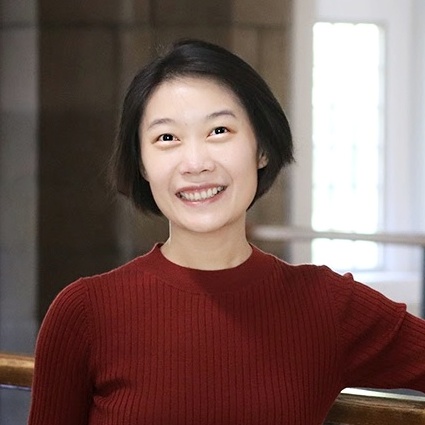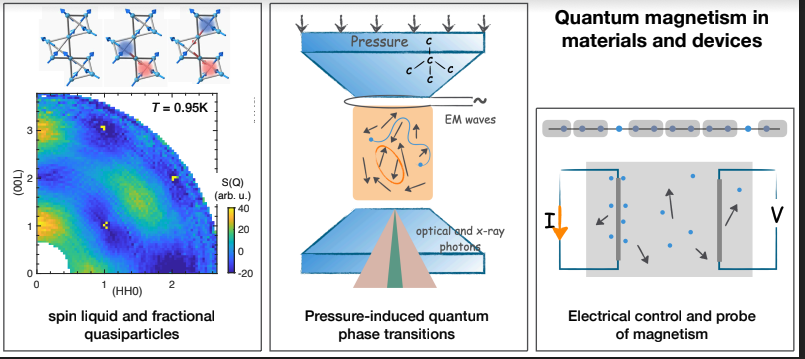
[email protected]
Assistant Professor of MSE and Physics, University of Tennessee, Knoxville
Research focus: quantum magnetism, strongly correlated electron systems, quantum devices, x-ray and neutron diffraction and spectroscopy, low-temperature electrical and magnetic transport, high-pressure techniques
Website: http://yishu-qm.utk.edu/
Bio
Dr. Yishu Wang is an experimental physicist working on emergent phenomena in correlated electron systems, with a particular focus on quantum magnetism and its liaison with modern device technology. She joined UTK in August 2022 as an assistant professor in Department of Materials and Engineering, jointly appointed by Department of Physics and Astronomy. Before moving to Knoxville, she was a Postdoctoral Fellow of Institute for Quantum Matter in Johns Hopkins University, after she obtained Ph.D. in physics from Caltech (2018), M.S. in physics from University of Chicago (2014), and B.S. in Engineering Physics from Tsinghua University in China (2013).
Research Description
The central theme of my research is to experimentally develop and verify macroscopic quantum phenomena in materials and explore their manifestation in modern device technology, with particular interests in quantum magnetism. We employ and develop a broad array of experimental techniques, such as time-resolved neutron scattering, inelastic neutron spectroscopy, x-ray magnetic diffraction and optical Raman spectroscopy under high pressure, audio-frequency electrical and magnetic transport down to mK-range, and spintronic devices tailored for one-dimensional spin-chain systems.
Recent research
T. Halloran, Yishu Wang, et al., Magnetic excitations and interactions in the Kitaev honeycomb Iridate β-Li2IrO3, Phys. Rev. B 106, 064423 (2022). https://doi.org/10.1103/PhysRevB.106.064423
Yishu Wang, et al., Monopolar and dipolar relaxation in spin ice Ho2Ti2O7, Sci. Adv. 7, ea0908 (2021). https://doi.org/10.1126/sciadv.abg0908
Y. Feng, Yishu Wang, et al., A continuous metal-insulator transition driven by spin correlations, Nat. Commun. 12, 2779 (2021). https://doi.org/10.1038/s41467-021-23039-6
Yishu Wang, et al., Approaching the quantum critical point in a highly-correlated all-in-all-out antiferromagnet, Phys. Rev. B 101, 220404(R) (2020) (Editors’ Suggestion). https://doi.org/10.1103/PhysRevB.101.220404
Yishu Wang, et al., Antisymmetric linear magnetoresistance and the planar Hall effect, Nat. Commun. 11, 216 (2020). https://doi.org/10.1038/s41467-019-14057-6
Yishu Wang, et al., Strongly- coupled quantum critical point in an all-in-all-out antiferromagnet, Nat. Commun. 9, 2953 (2018). https://doi.org/10.1038/s41467-018-05435-7
Research Image
